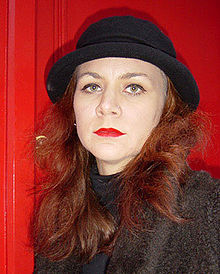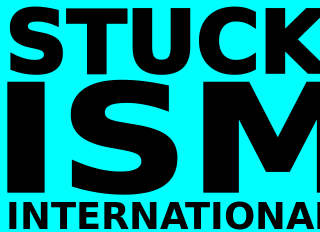
Stuckism is an international art movement founded in 1999 by Billy Childish and Charles Thomson to promote figurative painting as opposed to conceptual art. By May 2017 the initial group of 13 British artists had expanded to 236 groups in 52 countries.

Charles Thomson is an English artist, poet and photographer. In the early 1980s he was a member of The Medway Poets. In 1999 he named and co-founded the Stuckists art movement with Billy Childish. He has curated Stuckist shows, organised demonstrations against the Turner Prize, run an art gallery, stood for parliament and reported Charles Saatchi to the OFT. He is frequently quoted in the media as an opponent of conceptual art. He was briefly married to artist Stella Vine.

The Medway Poets were founded in Medway, Kent, in 1979. They were an English punk based poetry performance group and later formed the core of the first Stuckists Art Group. The members were Miriam Carney, Billy Childish, Robert Earl, Bill Lewis, Sexton Ming, Charles Thomson and Alan Denman. Others associated with the group include Philip Absolon, Sanchia Lewis and Tracey Emin. Most members also practised other art forms including music and painting.
Sexton Ming is a British artist, poet and musician who was a founding member of The Medway Poets (1979) and Stuckism art movement (1999).
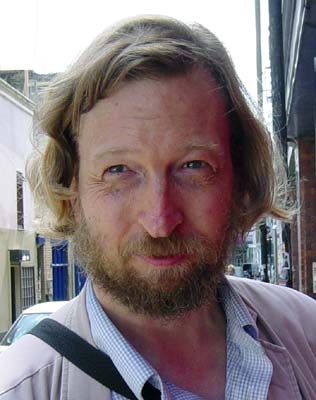
Philip Absolon is a British artist and a founder member of the Stuckists art group, exhibiting in the group shows, including The Stuckists Punk Victorian at the Walker Art Gallery in 2004, and taking part in Stuckist demonstrations against the Turner Prize. He has had long-term unemployment problems, depicted in his work with imagery of skeletons; his other main subject is cats, which he studies and depicts in motion.

Joe Machine is an English artist, poet and writer. He is a founding member of the Stuckists art group.

The Stuckists Punk Victorian was the first national gallery exhibition of Stuckist art. It was held at the Walker Art Gallery and Lady Lever Art Gallery in Liverpool from 18 September 2004 to 20 February 2005 and was part of the 2004 Liverpool Biennial.
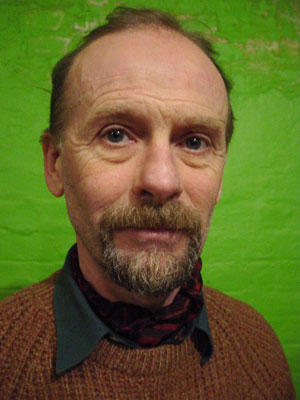
Eamon Everall is an English artist and educator. He was one of the 12 founder members of the Stuckists art group. He paints in a "neo-cubist" style, with subjects from life worked on over a long period.

John Bourne is a British artist and painter, living and working in Wales, and a member of the Stuckists art movement. He founded the Wrexham Stuckists group in 2001 and has been exhibited in the group's shows since then, including The Stuckists Punk Victorian. He has also taken part in Stuckist demonstrations against the Turner Prize. The subject matter for his paintings, which are done in a simplified style, comes from his memories.
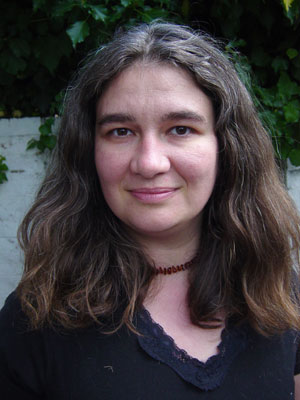
Elsa Dax is a French painter and a member of the Stuckists art movement. Major themes in her work are myth, legend and fairytale.

Charles Williams is a British artist. He is a founding member of the Stuckist art group and a member of the New English Art Club.

Mandy McCartin is an English artist based in London, a "proud butch lesbian" and DJ "classic soul fanatic".
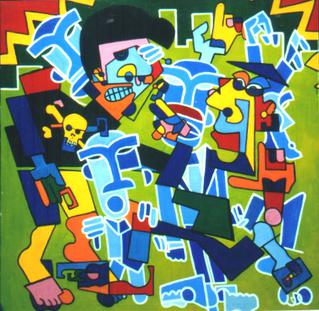
Stuckism is an art movement that began in London, England, in 1999. In 2000, Melbourne artist Regan Tamanui started the first international branch of the movement. As of 2010, there are seven Australian Stuckist groups, who have held shows—sometimes concurrently with UK activities—received coverage in the Australian press and on TV, and also been represented in UK shows. The Stuckists take a strong pro-painting and anti-conceptual art stance, and were co-founded by Charles Thomson and Billy Childish.
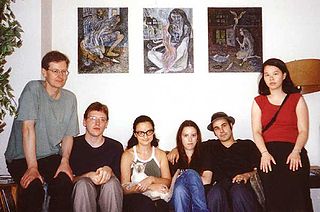
The Stuckism art movement was started in London in 1999 to promote figurative painting and oppose conceptual art. This was mentioned in the United States media, but the first Stuckist presence in US was not until the following year, when former installation artist, Susan Constanse, founded a Pittsburgh chapter.

Regan Tamanui is an artist based in Melbourne, Australia. In October 2000, he founded the Melbourne Stuckists, the fourth Stuckist of the original Stuckist groups and the first outside the United Kingdom. He has also painted prolifically as a street artist under the tag name HA-HA.
Naive John is a British artist and figurative painter. His work shows attention to detail with subjects that combine elements from popular culture alongside the mythic and mundane. He has also in the past been involved in the Stuckism art movement.

Stuckist photographers develop the values of the Stuckism art painting movement into film and photography. Some of them are in a group called the Stuckist Photographers.

Sir Nicholas Serota Makes an Acquisitions Decision is one of the paintings that was made as a part of the Stuckism art movement, and is recognized as a "signature piece" for the movement, It was painted by the Stuckism co-founder Charles Thomson in 2000, and has been exhibited in a number of shows since, as well as being featured on placards during Stuckist demonstrations against the Turner Prize.

The Stuckism International Gallery was the gallery of the Stuckist art movement. It was open from 2002 to 2005 in Shoreditch, and was run by Charles Thomson, the co-founder of Stuckism. It was launched by a procession carrying a coffin marked "The death of conceptual art" to the neighbouring White Cube gallery.
